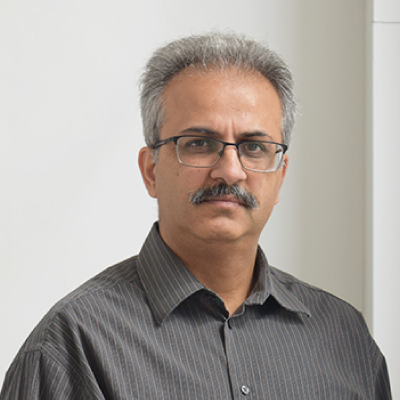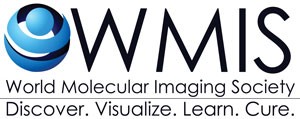
Ichio Aoki, PhD
National Institutes for Quantum and Radiological Science and Technology (QST), Chiba, Japan
Research Interests:
We are developing new imaging technologies and contrast agents to discover and understand diseases and develop medical treatment. Based on high magnetic field MRI technology that enables safe observation inside of the body, functional contrast agents that visualize the structure and pathological condition of diseases (e.g., contrast agents that predict cell function and disorder occurrence, theranostics by functional nanoparticles), brain function And its analysis, multimodal combining PET and optical technology as needed, and research and development of advanced equipment, imaging methods, information technology, etc. to achieve high-precision imaging. The technology will be validated in preclinical research using a pathological model and will be useful for more accurate diagnostic technology and medical research in a wide range of fields.

Research Interests:
The Botnar group is working on the development of novel MR pulse sequences for free-breathing motion corrected 3D whole heart MRI of the coronary arteries and the myocardium with a major focus on the development of advanced motion correction techniques, novel contrast mechanisms and quantitative tissue characterization. We are also very active in molecular MRI of atherosclerosis and myocardial infarction using novel target-specific contrast agents (elastin, collagen, albumin, fibrin, macrophages, oxLDL) and recently started with the development and validation of preclinical PET/MR and multimodal PET/MR contrast agents. We were among the first to demonstrate coronary wall remodeling using black blood MRI in a pilot clinical study. We have also led the first successful pre-clinical and clinical studies of a new fibrin specific MR contrast agent and have demonstrated the feasibility of imaging coronary vessel wall fibrosis and inflammation, using clinically approved MR contrast agents. Currently we are investigating the merits of target-specific MR and PET contrast agents for non-invasive imaging of endothelial integrity, dysfunctional vascular and myocardial remodeling and inflammation in models of atherosclerosis, aortic aneurysm and myocardial infarction. We also apply molecular imaging for the better understanding of deep venous thrombus (DVT) resolution and the better guidance of thrombolysis.

Research Interests:
Tumor Acidosis: Dr. Pagel has pioneered the development and application of acidoCEST MRI, which uses Chemical Exchange Saturation Transfer (CEST) to measure the extracellular pH (pHe) in a solid tumor. He has translated acidoCEST MRI to the radiology clinic. He has also developed PET/MRI co-agents and simultaneous PET/MRI methods that can measure tumor pHe. He is currently investigating MR Fingerprinting as another method for measuring tumor pHe. These tumor pHe measurements are used to improve cancer diagnoses, and to evaluate treatments that directly inhibit glycolysis; treatments that more generally reduce metabolism; treatments that are activated in acidic tumors; and pre-treatments that reduce acidosis and improve immunotherapy.
Tumor Hypoxia: The CAMEL group has optimized Oxygen Enhanced (OE) MSOT that measures oxygen saturation (%sO 2 and ΔsO 2 ) that are biomarkers of vascular hypoxia. We are performing a clinical MSOT study that detects hypoxic, metastatic lymph nodes. More recently, Dr. Pagel has been developing OE-EPR (Electron Paramagnetic Resonance) imaging that can measure oxygen pressure (pO 2 ) in the tumor microenvironment. The CAMEL group has combined OE MSOT with DCE MSOT, and is currently combining OE-EPR with DCE EPR, to provide a single scan session that can measure multiple biomarkers of the tumor vasculature. These hypoxia imaging studies are used to evaluate radiotherapy and radiosensitizers, and also assess pre-treatments that reduce hypoxia to improve tumor control with immunotherapy.
Tumor Vascular Perfusion: The CAMEL Group has invented new methods that analyze Dynamic Contrast Enhanced (DCE) MRI that can measure tumor vascular perfusion (RK rans and k ep ). More specifically, our group has developed the Linear Reference Region Model that avoids the need for an Arterial Input Function, relaxes requirements for fat temporal resolution, and improves precision. In addition, our group has developed DCE MSOT that can measure tumor vascular perfusion, and we are developing a similar DCE EPR method. Measurements of vascular perfusion are used to evaluate vascular disrupting agents and radiotherapies. Also, our DCE imaging methods are combined with our methods for imaging tumor hypoxia, and therefore apply to studies of radiotherapy and immunotherapy.
Enzyme Activity: Dr. Pagel pioneered the development of catalyCEST MRI that can detect enzyme activities within in vivo tumor models. More recently, CAMEL is developing MSOT contrast agents that can detect enzyme activities, which can also be used to improve tumor detection during surgery.

Research Interests:
Dr Poptani’s research focus is on development and application of advanced magnetic resonance imaging (MRI) and magnetic resonance spectroscopy (MRS) methods, with specific applications in neuroimaging and cancer.
His group was among the first to demonstrate the utility of diffusion weighted imaging and spectroscopy to assess response to gene therapy for brain tumors and for detection of apoptotic cell death in vivo.
His group has also been credited for developing small animal neuroimaging methods at the University of Pennsylvania including high-throughput methods for MR microscopy, stem cell tracking as well as diffusion tensor imaging for isolated tissues. These methods were later adapted for in vivo applications of the mouse as well as the rat brain and have been applied to study mouse models of memory disorders, schizophrenia and autism. In addition, Dr Poptani’s research group has been developing high resolution 1D and 2D MR spectroscopy techniques in preclinical models. With a strong interest in translational studies, Dr Poptani’s group has continued to be involved in clinical MRI and MRS research and has implemented several cutting-edge spectroscopic techniques on clinical magnets. Some of these methods include high resolution whole brain 3D MRS on 3T, single voxel 2D L-COSY on the human 7T magnet and several image processing algorithms for processing diffusion tensor imaging and dynamic contrast enhanced imaging data.
